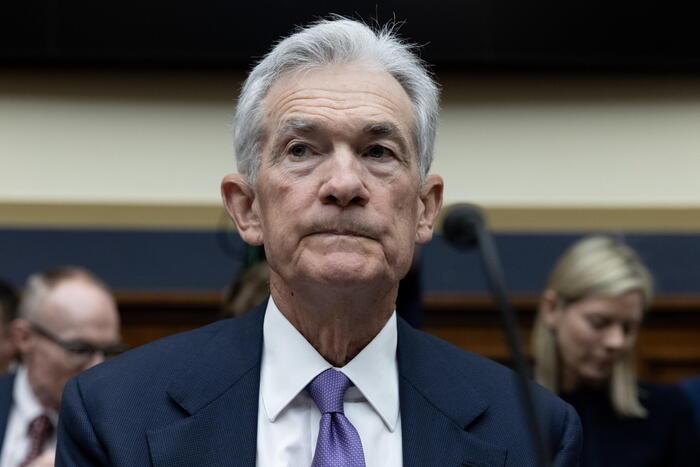The state development bank KfW is actually one of the safest and therefore most popular addresses on the international capital markets.
When it issues its billion-dollar bonds, investors usually line up and lend the banking group money on similarly favorable terms as the federal government.
After all, KfW is 80 percent owned by the federal government and 20 percent by the federal states, and if the worst comes to the worst, the German taxpayers would be responsible for their debts.
Tim Kanning
Editor in Business.
Follow I follow
However, the extensive rescue operations, for which the federal government is involving its state bank in the context of the energy crisis, have led to a considerable need for discussion among investors this year.
Above all, the commitment to the struggling gas importer Uniper hits the office.
Quickly raise 52 billion euros
By the end of November, KfW had to raise 52.2 billion euros to shore up energy security, head of capital markets business (Treasurer) Tim Armbruster revealed on Monday during an online press conference on Monday during an online press conference.
For comparison: In the pre-Corona year 2019, their entire domestic promotional business was only 43 billion euros.
"We had to have a lot of one-on-one conversations with investors," Armbruster said.
The lenders were particularly concerned with the questions of how the large sums of money from these allocation transactions by the federal government would be reflected in the state bank's capital market business and how they could be reconciled with its overall strategy as a development bank.
Added to this was the rapidly rising inflation from the summer onwards.
Distance to Bunds increased
In the meantime, demand for KfW bonds has fallen noticeably.
The yields were unusually far above those of comparable federal bonds, as shown by the example of a five-year bond that KfW issued in January of this year: At the time of issue, it was 0.29 percentage points above the comparable federal bond, but this so-called spread has since increased to 0.7 percentage points, which is an unusually high risk premium.
In the meantime it has fallen back somewhat to 0.47.
Nevertheless, the question arises: is KfW ultimately reaching its limits when it comes to raising funds on the capital markets?
This year, at 90 billion euros, it raised more money than ever before in its history.
For the next year, Armbruster is planning bonds of over 80 to 85 billion euros - and thus again more than was usual a few years ago.
Risks shielded
From Armbruster's point of view, it was very important to make it clear to investors that the federal government's allocation business, i.e. emergency aid in the crisis, and KfW's traditional core business, i.e. promotional loans for house builders and medium-sized companies, for example, remain strictly separate.
For example, the banking group largely procured the short-term "bridge financing" needed for energy security via the money market and has already reduced some of it.
Since the beginning of November, she has also been able to draw on the economic stabilization fund originally set up for the corona pandemic.
By the end of the year, KfW will make 20 billion euros available.
The risks of these rescue measures lie entirely with the federal government and are clearly shielded from those of day-to-day business (ring fencing).
Armbruster therefore does not see the limits of the possibilities of the state bank to refinance itself via the capital market.
The demand for highly liquid bonds, such as those issued by KfW, is still high.
If the central banks now scale back their purchase programs and their bond holdings, he expects the markets to normalize, i.e. that investors will pay more attention to how liquid individual securities are and that the differences will be reflected more strongly in the respective yields.
"Many investors are no longer used to that," said Armbruster.
"Even if you've been on the market for ten years, you've basically only experienced one cycle."
Lots of hustle and bustle expected on the bond market
The Treasurer said next year will definitely be challenging again.
On the one hand, he believes that markets are likely to remain volatile, and on the other hand, many large issuers are likely to increase their borrowing.
After all, government rescue packages all over the world have to be refinanced.
The federal government alone wants to raise a record sum of 539 billion euros through its federal finance agency.
Armbruster expects very high activity in the euro zone, especially in the first quarter, after the European Central Bank announced that it would reduce its high bond holdings from March.
In the coming year, too, KfW does not intend to use its conventional capital market activities to finance the Federal Government's allocation transactions.
Such assignment transactions always come at short notice, said Armbruster, and are therefore not suitable for refinancing through bonds.
KfW intends to expand its benchmark bonds next year so that it can raise up to EUR 6 billion with them.
In addition, the state bank intends to make its dollar borrowing more strategic and issue at least one benchmark bond per quarter.
Similar to this year, she wants to raise 10 billion euros via green bonds.












/cloudfront-eu-central-1.images.arcpublishing.com/prisa/KMEYMJKESBAZBE4MRBAM4TGHIQ.jpg)


